Choosing a chicken breed that will thrive in a particular climate might be quite difficult.
While many chicken breeds are able to endure both hot and cold temperatures, it’s still important to consider which will give you the best egg output.
There are a number of aspects to consider when deciding whether or not your chicken breed is better suited to hot or cold climates.
Birds that are able to survive hot temperatures will have brighter plumage and more exposed skin, especially on the head. Chickens bred for their ability to withstand the cold will be larger overall, with smaller combs and wattles.
However, in Michigan, you’ll need birds that can survive both the state’s extremes of heat and cold.
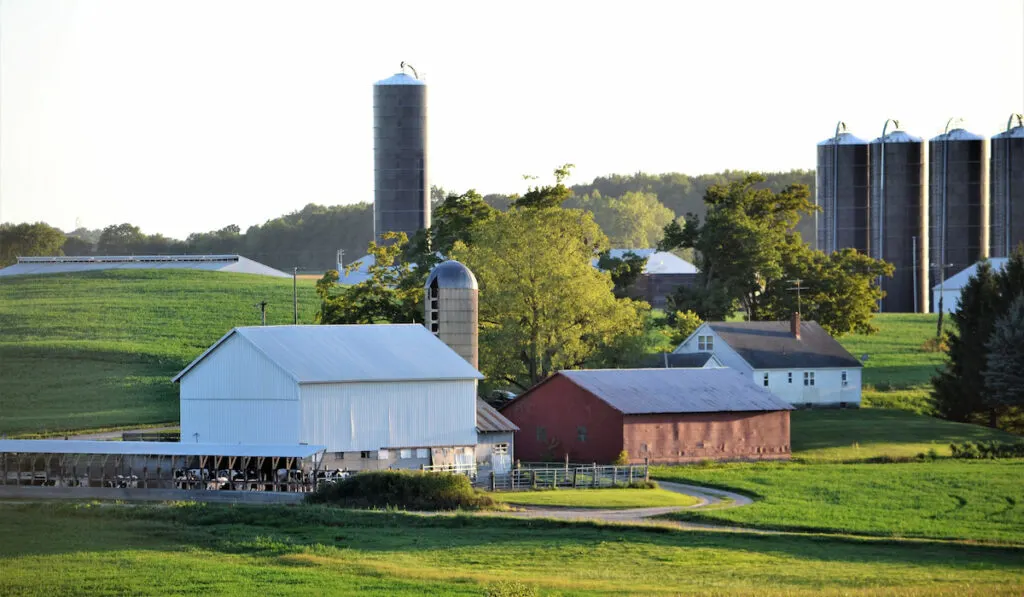
Table of Contents
The Climate of Michigan
Michigan has often been ranked as one of the coldest states in the USA. The weather is dynamic, with harsh winters and sunny summers.
Michigan’s eleven thousand lakes cover approximately 40 percent of the state’s area and significantly affect the state’s climate. In general, the state has a continental climate with significant humidity.
Temperatures in the south average between 18 and 82°F per year. Northern regions get lower average yearly temperatures of 3 to 75°F.
With an average high of 82°F in July, the weather is pleasant during the summer months. June, July, and August have the highest humidity levels.
Since the lakes cool slowly, the winters are generally milder than surrounding states. The typical low during the winter months is 27°F, but humid air might make the air seem cooler than it actually is.
Best Chickens for Laying Eggs in Michigan
| Buff Orpington | Lays about 200-280 eggs each year. Dual-purpose breed. An easy, friendly bird, perfect for kids and beginners. |
| New Hampshire | Lays about 200 eggs each year. Dual-purpose breed. Docile, tame, and ideal for beginners and kids. Hardy and low maintenance. |
| Sussex | Lays about 200–300 eggs each year. Ideal for novice chicken keepers and younger kids. Hardy and requiring little care. |
| Red Star | Lays about 280–360 eggs each year. Dual-purpose breed. Robust and requiring little care. |
| Ameraucana | Lays about 200 eggs each year. Beautiful pale blue eggs. Great forager. |
| Delaware | Lays about 200 eggs each year. Great dual-purpose breed. Hardy and low maintenance. Friendly and tame, ideal for beginners and kids. |
| Sussex | Lays about 200-250 eggs each year. Dual-purpose breed. Docile and tame. Ideal for beginners. Low maintenance. |
1. Buff Orpington
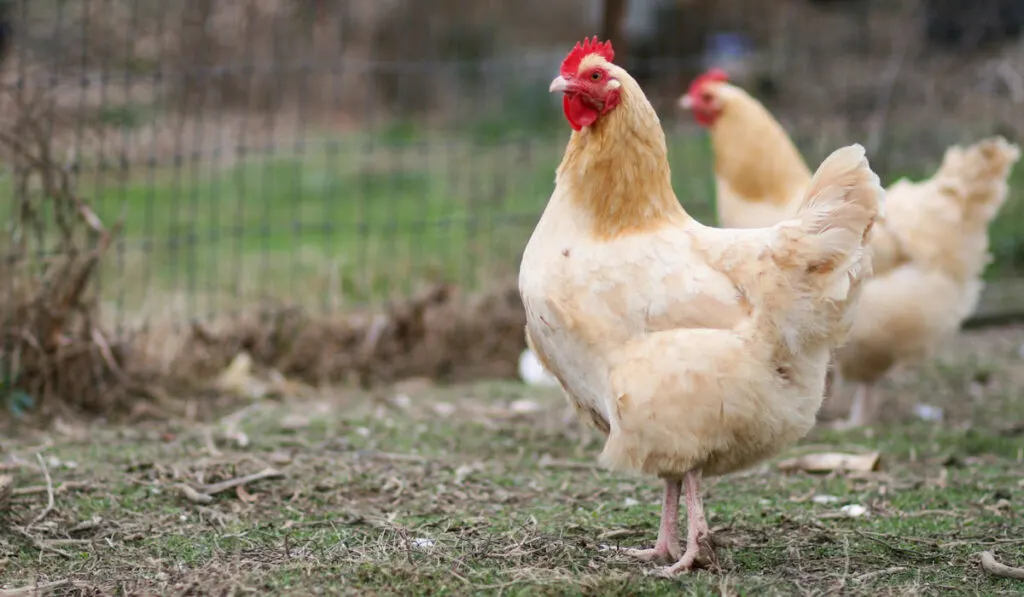
Buff Orpingtons are the most common breed of chicken worldwide because of their moderate size and ability to lay between 200 and 280 light-brown eggs every year.
The Buff Orpington is a resilient breed that can thrive in a wide range of conditions; its thick, fluffy feathers serve to protect it during the colder months.
They like to hang out with people and are patient with kids. The Buff hen is a loving lap bird that responds well to gentle handling.
Buff Orpingtons adore their food, and some will linger around the feeder all day so they don’t have to travel far to eat.
While allowing hens to eat freely is beneficial, Orpingtons are prone to becoming overweight, so you may need to limit their eating.
To sum up, this breed of chicken is great for both egg production and companionship.
2. New Hampshire
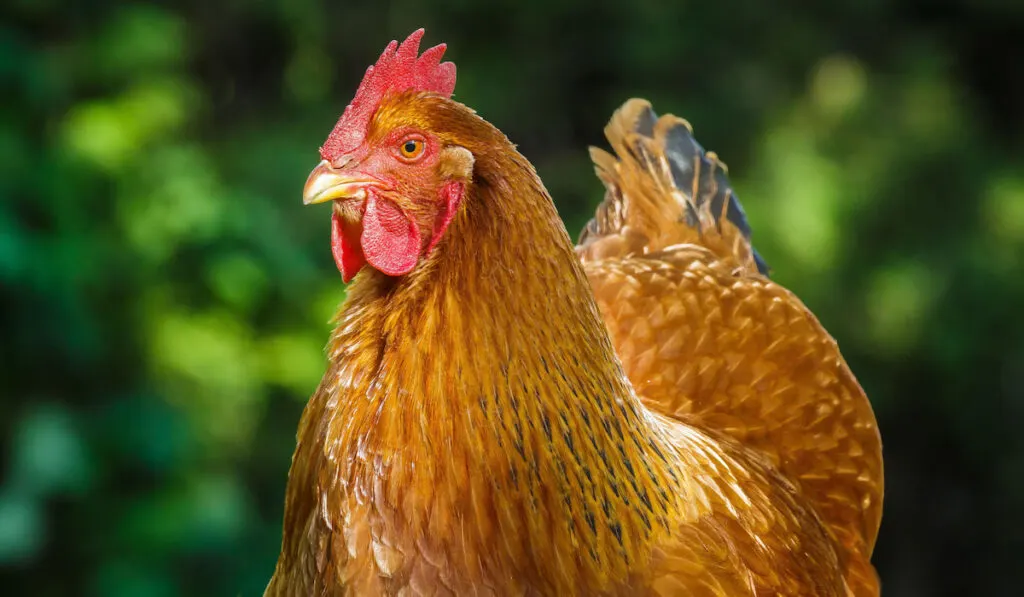
The New Hampshire chicken is a stunning chicken breed with a unique red-brown coloration.
The New Hampshire chicken has earned a reputation as a versatile breed. Both its egg output and its meat production are of the highest quality.
A healthy New Hampshire hen may produce 200+ big eggs annually.
They are calm and easy to breed, making them excellent starter chickens. They don’t mind being touched or handled by people and are quite obedient.
The New Hampshire chicken breed can endure freezing conditions. They are renowned for their incredible hardiness and vitality.
3. Plymouth Rock
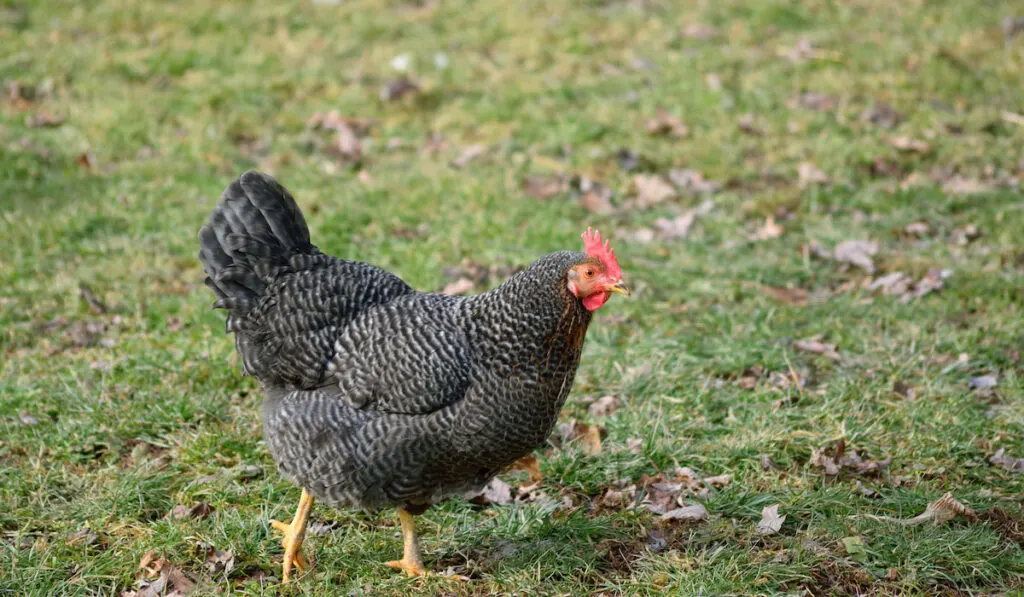
The Plymouth Rock is not only one of the oldest but also one of the most valued and loved American chicken breeds.
In addition to its high-quality, dual-purpose production, the Plymouth Rock’s unique character is a major selling point. These chicks are the cutest and most obedient birds in the poultry world.
They are a great option for families with children of varying ages and for adults just starting out with chicken keeping.
Plymouth hens have a yearly egg production range of 200–300 eggs. And their large, brown eggs are of the highest quality.
As an added bonus, Plymouth Rock chickens are low-maintenance birds that can easily adapt to either hot or cold climates.
4. Red Star

When it comes to laying eggs, the Red Star chicken is unrivaled. They have a yearly egg production potential of 280–360 eggs. However, on average, they produce 300 eggs every year.
Red Stars are also known by a variety of other names. Golden Comets, Gold Stars, Gold Sex Links, Hybrids, Red Stars, Bovan Browns, and ISA Browns are just a few examples.
A dual-purpose breed, the Red Star weighs in at around 8 pounds when fully grown. That’s plenty for a family to enjoy for dinner.
However, Red Star chickens are a hybrid breed developed by selective breeding with the goal of egg production. That’s why they’re so successful at layering.
The Red Star is also highly climate tolerant. If you provide your Red Star chickens with adequate shelter and a warm place to nest, they will continue laying eggs reliably during the colder months.
5. Ameraucana
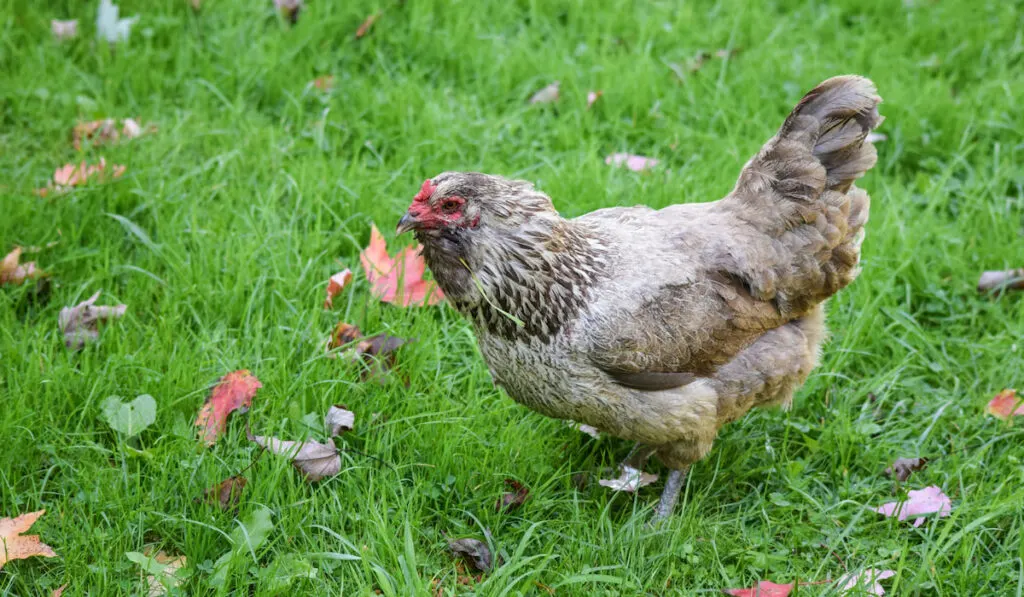
The rare and unique Ameraucana chickens are a breed in themselves.
The beautiful pale blue hue of Ameraucana eggs is a hallmark of the breed. Ameraucana hens can produce up to four eggs each week, which is approximately 200 eggs annually.
But the ability to lay blue eggs isn’t the only interesting trait of this breed.
The soft plumage of their faces and their sweet natures have won the hearts of many backyard chicken keepers.
Ameraucanas are self-sufficient chickens who prefer free ranging and foraging for their own food, although they will tolerate being raised in confinement as well.
If you live in close quarters with your neighbors, you may appreciate their calm demeanor and lack of noise.
They can survive in a variety of temperatures and are particularly suited to the cold, as they just have a pea comb that seldom gets frostbite.
6. Delaware
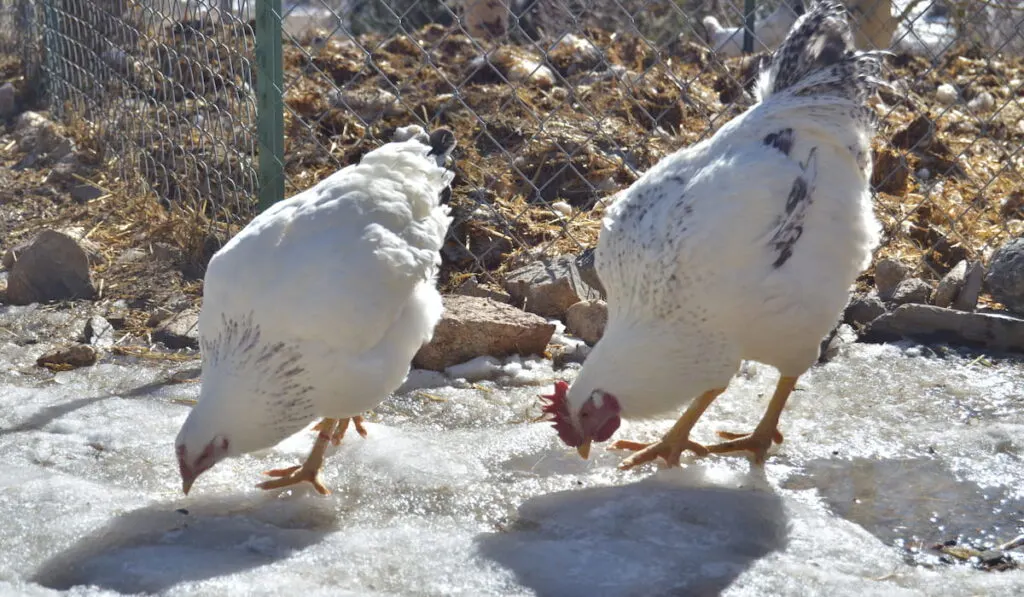
The Delaware is one of the best choices for a dual-purpose breed.
These chickens are famous for their rapid growth and effective meat production. Delaware hens typically weigh around 6 pounds at maturity, while roosters average 7 to 8 pounds.
Delaware chickens are capable of laying both extra-large and jumbo-sized eggs, and they typically produce 200 eggs per year.
The average Delaware hen lays 200 eggs each year, and they can lay eggs of both the extra-large and jumbo sizes.
Taking care of Delaware chickens isn’t difficult because they’re a sturdy breed. Food, water, and shelter are the only real needs for this breed.
They have a natural curiosity and will explore every area of your yard if given the chance.
The Delaware is a docile and placid bird that is not easily frightened or anxious.
They are one of the most social chicken varieties, and they enjoy the company of kids. They never act angrily and always keep their calm demeanor. They are also usually the most entertaining members of the flock.
7. Sussex
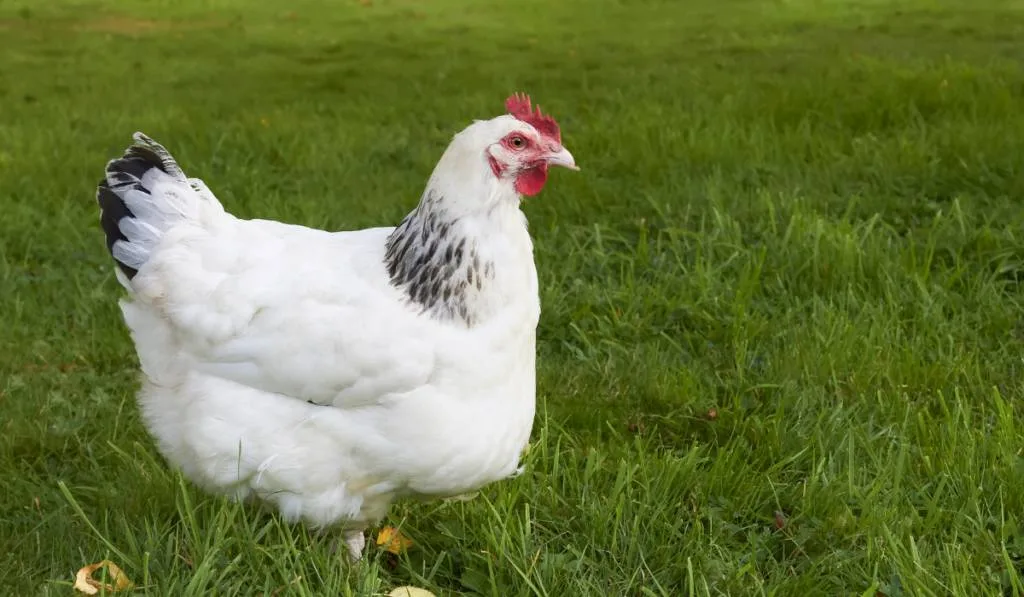
The Sussex is a classic English bird that has maintained its popularity over the years.
The generally large sized Sussex chicken is useful for both its eggs and its meat. The most common colors for the Sussex are red, white, and a variety of speckled patterns.
You can expect hens to weigh approximately 7 pounds and roosters to weigh around 9 pounds.
The laying abilities of Sussex chickens vary between varieties. But on average, a healthy Sussex hen will lay 4 to 5 large brown eggs per week. That’s between 200 and 250 eggs per year.
The Sussex is a breed of chicken that thrives on staying active and occupied throughout the day. They spend the majority of their day searching for something to eat.
Even the roosters are tame and friendly, so you don’t have to worry about them being hostile.
You should keep an eye on them because their docile nature makes them vulnerable to bullying from more dominant birds.
The Sussex is a hardy and active breed of chicken that needs no particular care to thrive.
The roosters might require some attention over the winter because of their big combs. Applying petroleum jelly to their comb and wattles prevents them from freezing.
Final Thoughts
Egg-laying chickens that can withstand both cold and heat are ideal for the state of Michigan.
Due to the intense cold and snow in Michigan, it is necessary to choose bigger birds with more body fat, especially those with more feathers and smaller combs.
During the hot summer months, it’s important to provide birds with cool shelter and plenty of water.
Our criteria for choosing the birds in this article were their ability to lay eggs and their tolerance to different environments.
The temperament, care required, and general health of your flock are also important factors to consider.
Resources
- https://weatherspark.com/y/16081/Average-Weather-in-Michigan-Center-Michigan-United-States-Year-Round
- https://seasonsyear.com/USA/Michigan
- https://www.bestplaces.net/climate/state/michigan
- https://www.chickensandmore.com/buff-orpington/
- https://cs-tf.com/new-hampshire-chicken/
- https://www.heritageacresmarket.com/plymouth-rock-chicken/
- https://a-z-animals.com/animals/red-star-chicken/
- https://milefour.com/blogs/learn/ameraucana-chicken#6
- https://cs-tf.com/new-hampshire-chicken/
- https://www.ecopeanut.com/red-star-chickens/
- https://www.chickensandmore.com/delaware-chicken/
- https://cs-tf.com/delaware-chickens/
